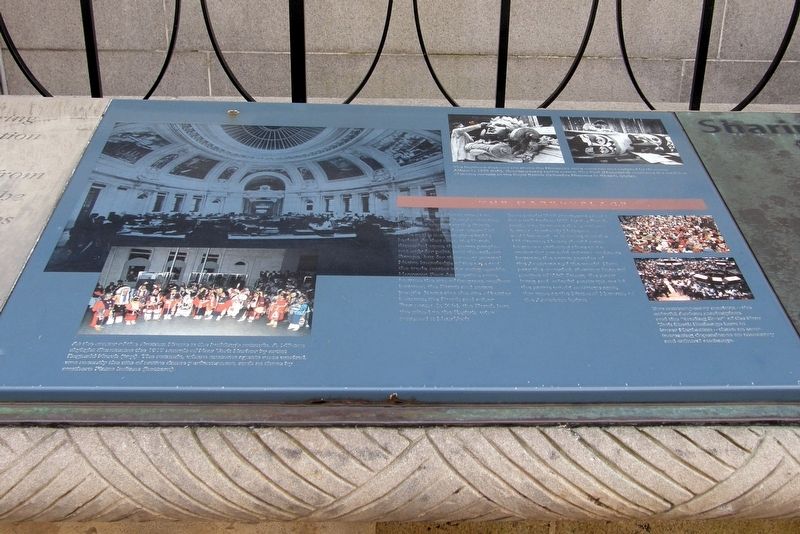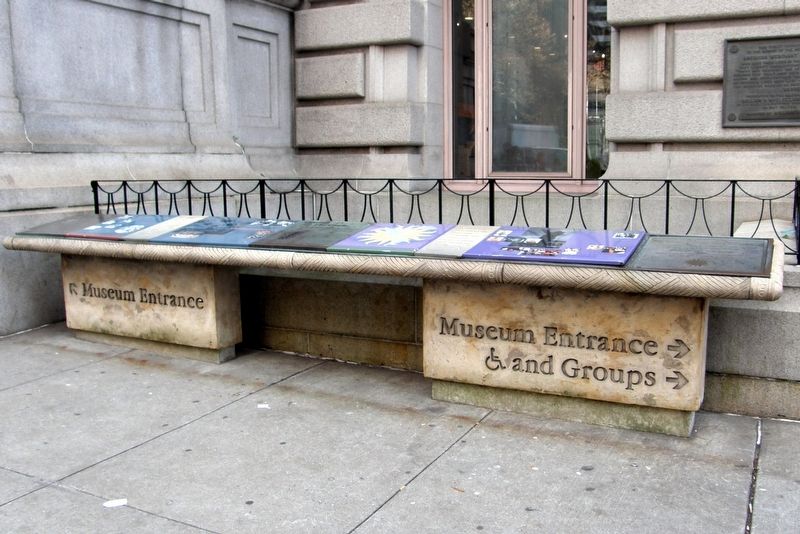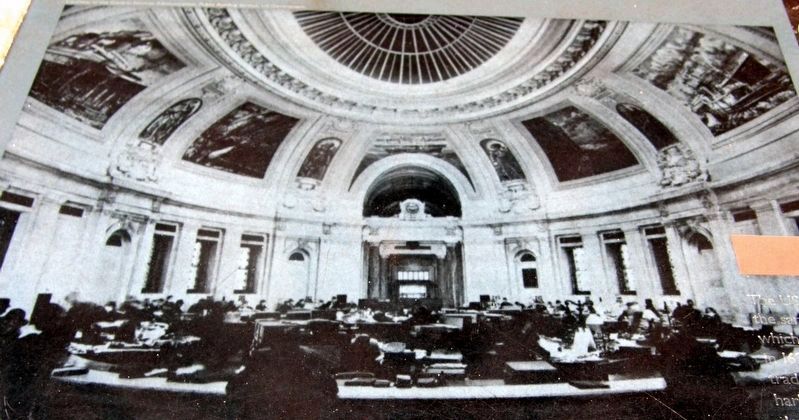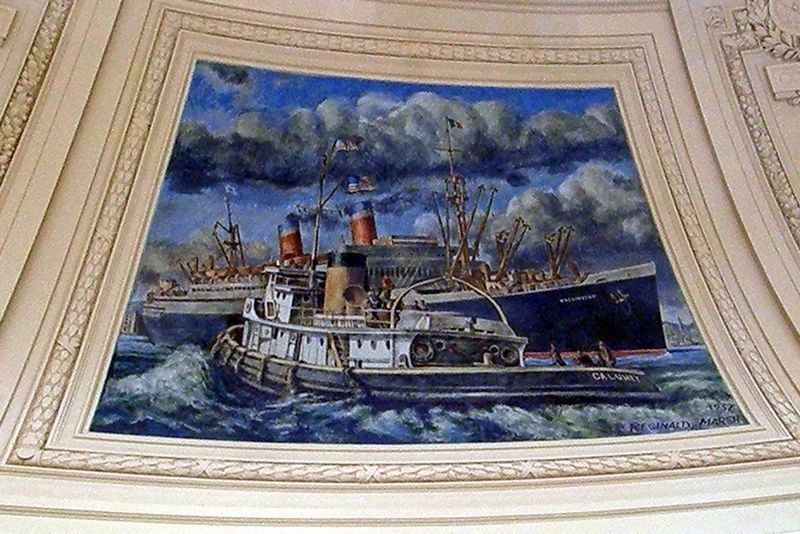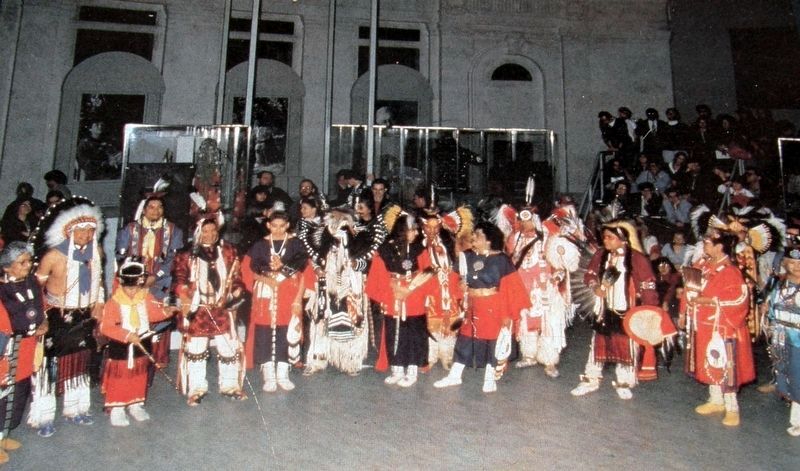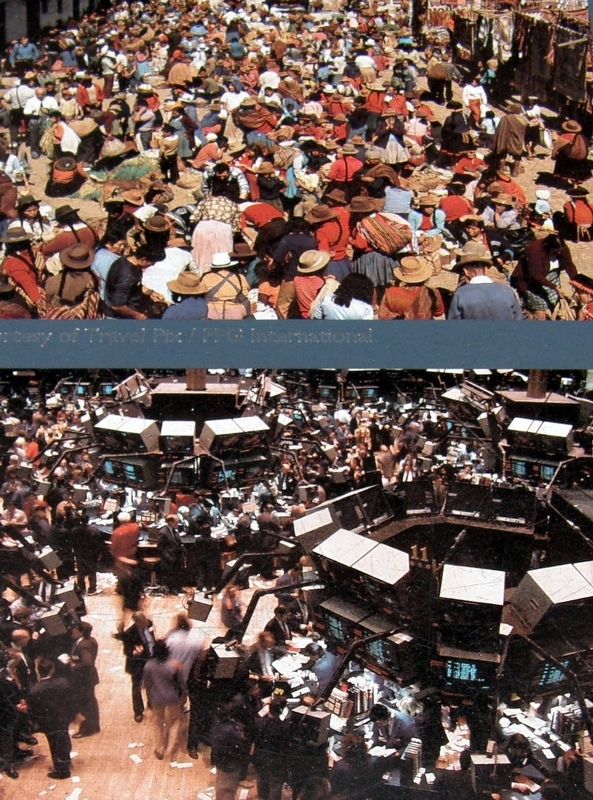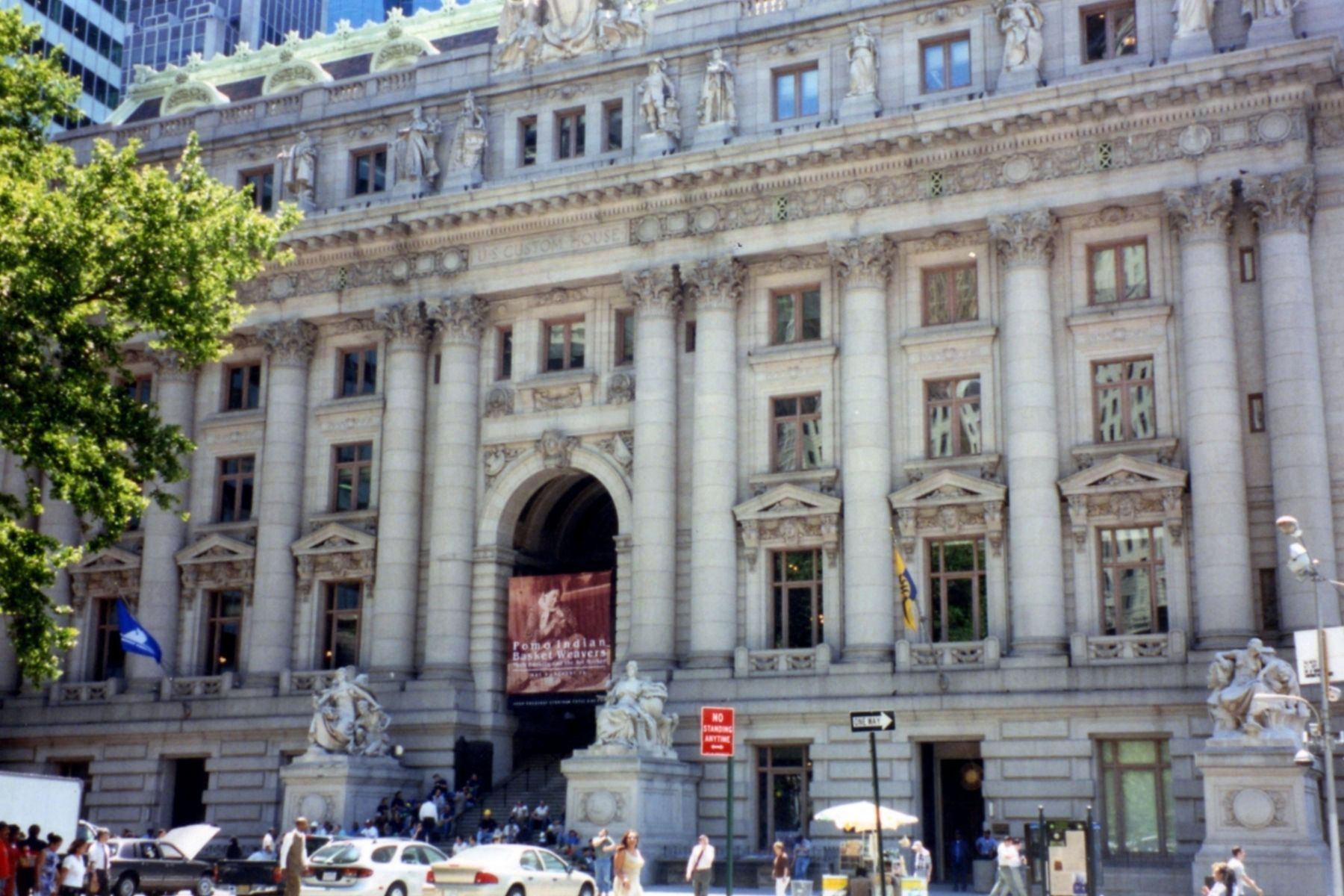Financial District in Manhattan in New York County, New York — The American Northeast (Mid-Atlantic)
The Marketplace
The US Custom House stands on the same ground as Fort Amsterdam, which was occupied by the Dutch in 1626 to secure their control for trade in the increasingly valuable harbor. At that time, the Dutch depended upon the native people – not only for pelts sold throughout Europe, but for their very survival. Native knowledge of the area and the trade routes was indispensable. However, Fort Amsterdam soon became the site of frequent conflict between the Dutch and native people. It was also the site of battles between the Dutch and other Europeans. In 1664, the Dutch lost the island to the English, who renamed it New York.
Since nearby Wall Street was named for a wall built in 1653 by the Dutch settlers to keep out the “northern Indians” (probably Manicans and Munsees), it is ironic that the US Custom House should again become a gathering place and a center for peaceful cultural exchange between the native people of the Americas and the world. Here, near the crowded, shouting financial market of Wall Street, the many living and colorful marketplaces of the native world converge again, this time at the National Museum of the American Indian.
Topics. This historical marker is listed in these topic lists: Colonial Era • Industry & Commerce • Native Americans. A significant historical year for this entry is 1626.
Location. 40° 42.266′ N, 74° 0.83′ W. Marker is in Manhattan, New York, in New York County. It is in the Financial District. Marker is on State Street near Bowling Green, on the left when traveling south. The marker is one of several in a bank to the right of the main entrance to the National Museum of the American Indian. Touch for map. Marker is in this post office area: New York NY 10004, United States of America. Touch for directions.
Other nearby markers. At least 8 other markers are within walking distance of this marker. “North America” sculpted by Daniel Chester French (here, next to this marker); Places of Exchange (here, next to this marker); Sharing the Circle (here, next to this marker); Native People Of The Western Hemisphere (here, next to this marker); George Gustav Heye (here, next to this marker); American Merchant Marine (here, next to this marker); Drawn To The City (a few steps from this marker); …to Manhattan (a few steps from this marker). Touch for a list and map of all markers in Manhattan.
More about this marker. The lettering has faded so much that the marker is very difficult to read.
Regarding The Marketplace. The building is listed in the "AIA (American Institute of Architects) Guide to New York City, Fifth Edition".

Photographed By Larry Gertner, March 14, 2019
7. Inset
The keystone that now sits above the Museum’s main entrance was sculpted by Vincenzo Alfano in 1903 (left). Contemporary native carver, Tim Paul (Hesquiaht) continues the tradition of totem carving at the Royal British Columbia Museum in Canada (right).
Credits. This page was last revised on January 31, 2023. It was originally submitted on March 20, 2019, by Larry Gertner of New York, New York. This page has been viewed 273 times since then and 28 times this year. Photos: 1, 2, 3, 4, 5, 6, 7, 8. submitted on March 20, 2019, by Larry Gertner of New York, New York. • Bill Pfingsten was the editor who published this page.
